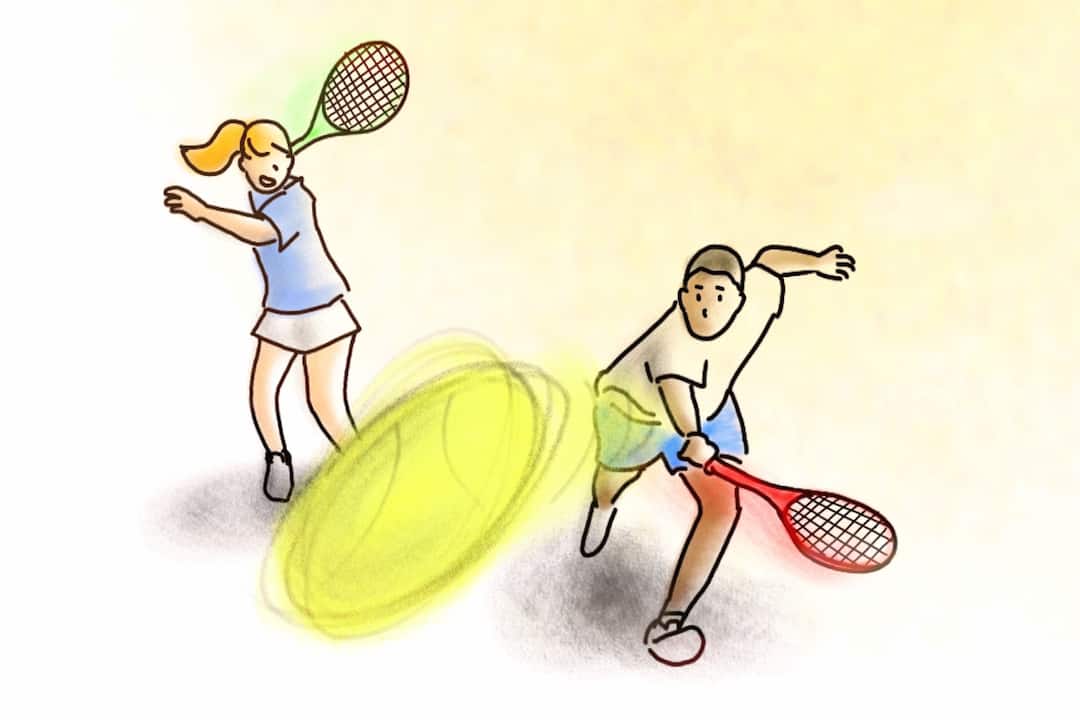In the age of the algorithm, the way I fell into tennis was — like with so many other things — through YouTube compilations. The greatest of these compilations came from the Laver Cup — the competition between Europe and the World, in which the best tennis players coach, root for, and team up with each other, featuring even the likes of Roger Federer and Rafael Nadal playing doubles.
I was pumped for the 2021 edition of the Laver Cup, which took place in Boston, Massachusetts. Team World included two Canadian stars, Felix Auger-Aliassime and Denis Shapovalov. But the glossy shine of the tournament started to wear off as I learned more about it.
The Laver Cup is modelled on the Europe vs US format of golf’s Ryder Cup. However, it’s not as if ‘the world’ doesn’t include Europe, and chants for Team World players are not exactly the most rousing compared to the excitement of cheering for your national heroes. There’s also more than a slight talent imbalance, since Team Europe is the home of some of the biggest names in tennis, like Federer, Nadal, and Novak Djokovic. Even with none of them playing this year, Team Europe still featured the second-, third-, fourth-, fifth-, and seventh-highest ranked players worldwide.
As a business, the Laver Cup aims to distinguish itself on every front from other tournaments, down to its signature “Laver Cup Black” courts, which are exclusive to and named after the tournament. It is a chance to see the world’s best players get a reprieve from battling each other week in and week out, and instead meet on friendlier terms.
But I can’t stop seeing the things I loved most — the celebrity match-ups, the unprecedented access to players who you can hear talking during changeovers — as business decisions, particularly when I learned that Federer was not just a player but also the brains and partial owner of Laver Cup. There were even points where I felt like the glitziness got in the way of the tennis. Of course I know that sports is a business, but what happens when that fact keeps impinging on the experience of watching it?
There was a lot of skepticism from fans in the earlier years of the Laver Cup; since the tournament doesn’t count toward a player’s Association of Tennis Professionals ranking, it’s more akin to exhibition tennis or matches that are played for charity than to ranked matches. Federer himself endeavored to distinguish the Laver Cup as ‘real tennis’: “If it’s for charity it’s different, because then it’s about the show, but the Laver Cup is about winning, so it’s different.” But the line between real tennis and fake tennis isn’t as clear as Federer would like.
Even in its fourth iteration, it feels like the players are like contestants at The Bachelor. And the comparison to reality TV isn’t too far off — after all, the players do know we can hear their interactions on the bench, such as the time at the end of the first day when Alexander Zverev was “accidentally” caught saying that Team World wouldn’t win any more matches.
As for the players, while I do believe they are really in it the tournament to win it, it’s jarring to see the change in pace of exhibition matches especially when compared to their stoic demeanours at the US Open just two weeks ago.
The Laver Cup aims to bring tennis into the twenty-first century, but it’s difficult to see whether that means they want to address the many structural issues in the sport or simply conform to the economic logic of celebrity-driven culture. While I do appreciate the sense of being a team on the court, a Team World that is essentially composed of the US, Canada, and Australia is particularly unfortunate in a sport that is already dominated by white men from the Western hemisphere. And, I’m ashamed to say, it took a while for it to occur to me that this event could so easily have incorporated women players and coaches — a huge step for a sport in which there is still a significant gender disparity.
This is nowhere near as bad as the attempted Super League, the much maligned attempted consolidation of the top European soccer clubs. But one can’t help but imagine how great the Laver Cup could have been.


